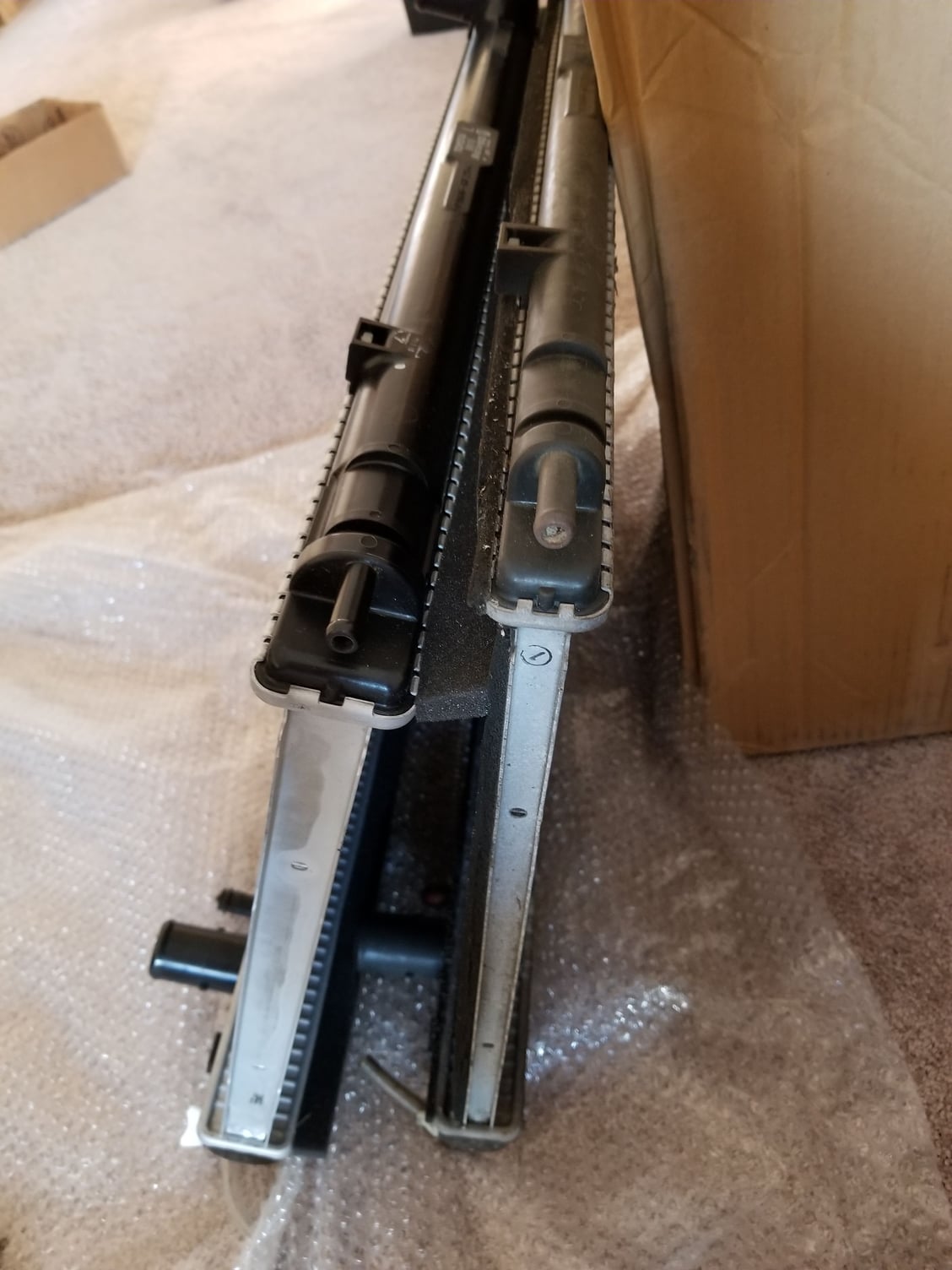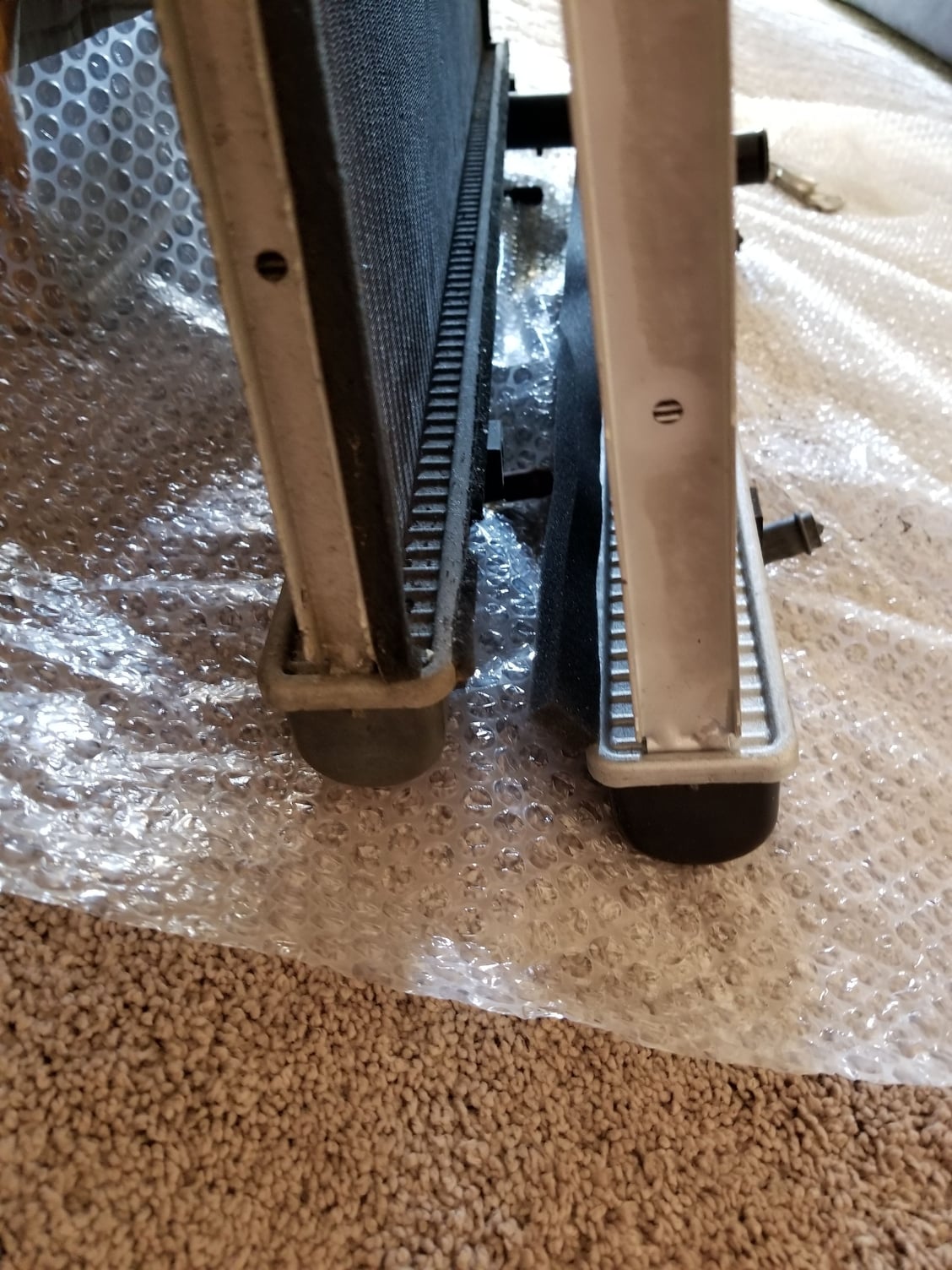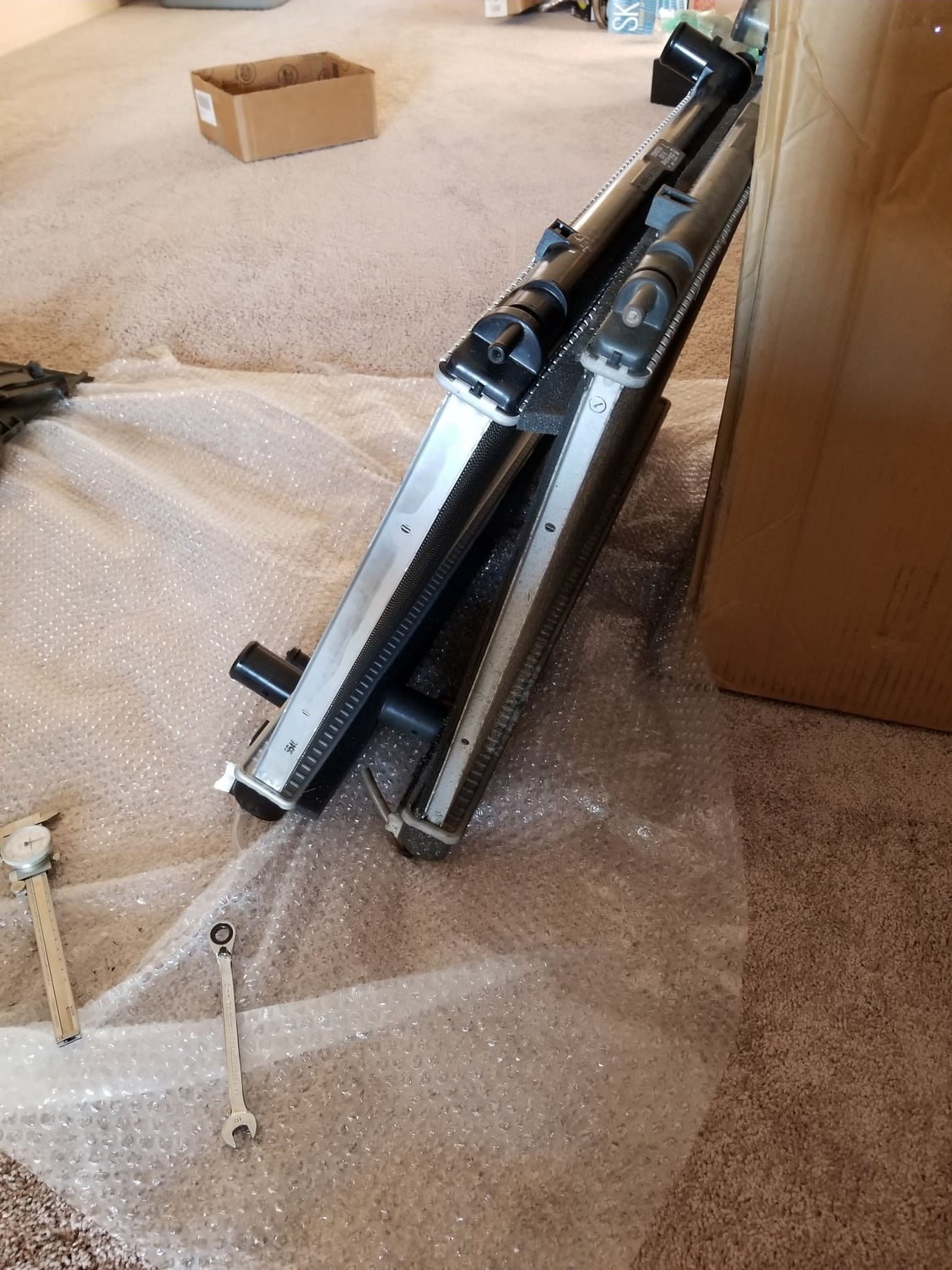1998-2000 ls400 oem radiator options
#46
Lexus Test Driver
iTrader: (1)
When I did the timing belt on my 1995 LS400 I was amazed that the rubber stuff like coolant hoses etc felt good strong crack free and flexible still after over 20 years.
That is really impressing. Now 24 years old now and stil ok. I changed lower ball joints in front. The old ones felt like new but failed spindle ball joints can be sudden so... Also the 23 years old spark plug wires seemed ok but I chickened out and exchanged them for new DENSO parts.
That is really impressing. Now 24 years old now and stil ok. I changed lower ball joints in front. The old ones felt like new but failed spindle ball joints can be sudden so... Also the 23 years old spark plug wires seemed ok but I chickened out and exchanged them for new DENSO parts.
#47
Lexus Champion
Thread Starter
Forgot to answer your question about the air duct above the radiator. I used the same one without any fitment issues.
Increasing flow increases coolant pump power draw, so if you have more coolant flow through the larger radiator you would be increasing your power consumption not decreasing it.The only time this would happen is when you exceed the thermostat temperature/thermostat is wide open though since any other time the thermostat is what controls the flow rate.
Since the larger radiator is more effective at releasing heat, the thermostat would need to open less on average which means your coolant flow rate through the system would on average be less than before. Since coolant pump power is proportional to flow rate your power consumption of the pump would go down, but that's because of greater cooling effectiveness not because of less flow restriction. Higher efficiency radiator = less flow needed for the same amount of cooling = less power consumed by pump. The change in MPG or acceleration power is going to be negligible though so I don't even see the value in looking at the effect this has on power consumption.
Increasing flow increases coolant pump power draw, so if you have more coolant flow through the larger radiator you would be increasing your power consumption not decreasing it.The only time this would happen is when you exceed the thermostat temperature/thermostat is wide open though since any other time the thermostat is what controls the flow rate.
Since the larger radiator is more effective at releasing heat, the thermostat would need to open less on average which means your coolant flow rate through the system would on average be less than before. Since coolant pump power is proportional to flow rate your power consumption of the pump would go down, but that's because of greater cooling effectiveness not because of less flow restriction. Higher efficiency radiator = less flow needed for the same amount of cooling = less power consumed by pump. The change in MPG or acceleration power is going to be negligible though so I don't even see the value in looking at the effect this has on power consumption.
Somewhere there are graphs depicting engine power required to drive the water pump vs RPM..unsure if linear.
The core thickness on tow package (5015) radiator is 1" as compared to standard (5013) radiators' .625" core.
Am interested in whether coolant pressure drop (which the water pump must overcome) is reduced with the slightly thicker radiator...
Doubling the core thickness of a radiator causes airflow pressure drop through the cooling fins, necessitating increased airflow to remove additional heat, while ambient air traveling through deeper fins lheat soaks, so its ability to remove heat diminishes. Have heard radiator terms like double and triple cores.
It appears the Denso 5015 is a single core, so airflow is not an issue for extra .375" core width.
#48
Lexus Champion
Thread Starter
Forgot to answer your question about the air duct above the radiator. I used the same one without any fitment issues.
Increasing flow increases coolant pump power draw, so if you have more coolant flow through the larger radiator you would be increasing your power consumption not decreasing it.The only time this would happen is when you exceed the thermostat temperature/thermostat is wide open though since any other time the thermostat is what controls the flow rate.
Since the larger radiator is more effective at releasing heat, the thermostat would need to open less on average which means your coolant flow rate through the system would on average be less than before. Since coolant pump power is proportional to flow rate your power consumption of the pump would go down, but that's because of greater cooling effectiveness not because of less flow restriction. Higher efficiency radiator = less flow needed for the same amount of cooling = less power consumed by pump. The change in MPG or acceleration power is going to be negligible though so I don't even see the value in looking at the effect this has on power consumption.
Increasing flow increases coolant pump power draw, so if you have more coolant flow through the larger radiator you would be increasing your power consumption not decreasing it.The only time this would happen is when you exceed the thermostat temperature/thermostat is wide open though since any other time the thermostat is what controls the flow rate.
Since the larger radiator is more effective at releasing heat, the thermostat would need to open less on average which means your coolant flow rate through the system would on average be less than before. Since coolant pump power is proportional to flow rate your power consumption of the pump would go down, but that's because of greater cooling effectiveness not because of less flow restriction. Higher efficiency radiator = less flow needed for the same amount of cooling = less power consumed by pump. The change in MPG or acceleration power is going to be negligible though so I don't even see the value in looking at the effect this has on power consumption.
See;
https://www.clublexus.com/forums/ls-...ator-hose.html
Looks like it would provide better access to hydro fan fluid resorvoir.
#49
Lexus Champion
Thread Starter
Also am interested in diameter of the hydro-fan blades and profile (depth at fan) of the hydro-fan shroud.
Thanks
#50
Lexus Champion
Thread Starter
Anyone a radiator expert?
Cooling systems on automotive internal combustion engines places the radiator in front of the vehicle.
Radiator heat "washes" over the engine.
My question then is whether the thicker core of "tow package" radiator with its increased coolant capacity would dissipate heat faster, but at lower air temperature in a pressurized system.
The thermostat regulates coolant temperature.
I hope the question makes sense, but inquire if airflow temperature coming off the radiator would decrease with thicker radiator (vs larger surface/frontal area radiator)
Thanks.
Cooling systems on automotive internal combustion engines places the radiator in front of the vehicle.
Radiator heat "washes" over the engine.
My question then is whether the thicker core of "tow package" radiator with its increased coolant capacity would dissipate heat faster, but at lower air temperature in a pressurized system.
The thermostat regulates coolant temperature.
I hope the question makes sense, but inquire if airflow temperature coming off the radiator would decrease with thicker radiator (vs larger surface/frontal area radiator)
Thanks.
#51
Lexus Champion
Anyone a radiator expert?
Cooling systems on automotive internal combustion engines places the radiator in front of the vehicle.
Radiator heat "washes" over the engine.
My question then is whether the thicker core of "tow package" radiator with its increased coolant capacity would dissipate heat faster, but at lower air temperature in a pressurized system.
The thermostat regulates coolant temperature.
I hope the question makes sense, but inquire if airflow temperature coming off the radiator would decrease with thicker radiator (vs larger surface/frontal area radiator)
Thanks.
Cooling systems on automotive internal combustion engines places the radiator in front of the vehicle.
Radiator heat "washes" over the engine.
My question then is whether the thicker core of "tow package" radiator with its increased coolant capacity would dissipate heat faster, but at lower air temperature in a pressurized system.
The thermostat regulates coolant temperature.
I hope the question makes sense, but inquire if airflow temperature coming off the radiator would decrease with thicker radiator (vs larger surface/frontal area radiator)
Thanks.
The only drawback you will have is increased weight. Since you are not altering the output of the engine at all the total amount of thermal dissipation that the airflow mass and the radiator fins combined have to deal with is completely unchanged from a thin core, you're not going to see any more or less heat entering the engine bay unless you alter the engine output or greatly increase loading.
I ran into an issue with my project car that forced me to go to a 3 inch thick radiator core combined with about a gallon and a half total capacity side tanks on a over 3 foot wide 2 foot tall radiator. I tried many tricks before I caved in and simply got a larger radiator involving a high flow water pump, upgraded impellers, different hose routing, reverse coolant flow balanced thermostat, and a bunch of other stuff but at the end of the day if the thermal load is simply too high it doesn't matter how efficient the coolant flow is or how resistance it is you can't dissipate heat if you don't have a surface area that has enough air mass moving through it. Had mine made as a one off that is now a catalogue item that can be made to order with a two week lead time lol!
The 400 with a tow rad should be able to control 450 hp based on fan flow and area, it won't heat soak any worse if you don't increase the power
The following users liked this post:
sha4000 (07-28-20)
Thread
Thread Starter
Forum
Replies
Last Post
tyncobb
LS - 1st and 2nd Gen (1990-2000)
1
03-12-12 04:26 PM
lexsc3
Performance & Maintenance
1
08-19-03 10:50 AM








